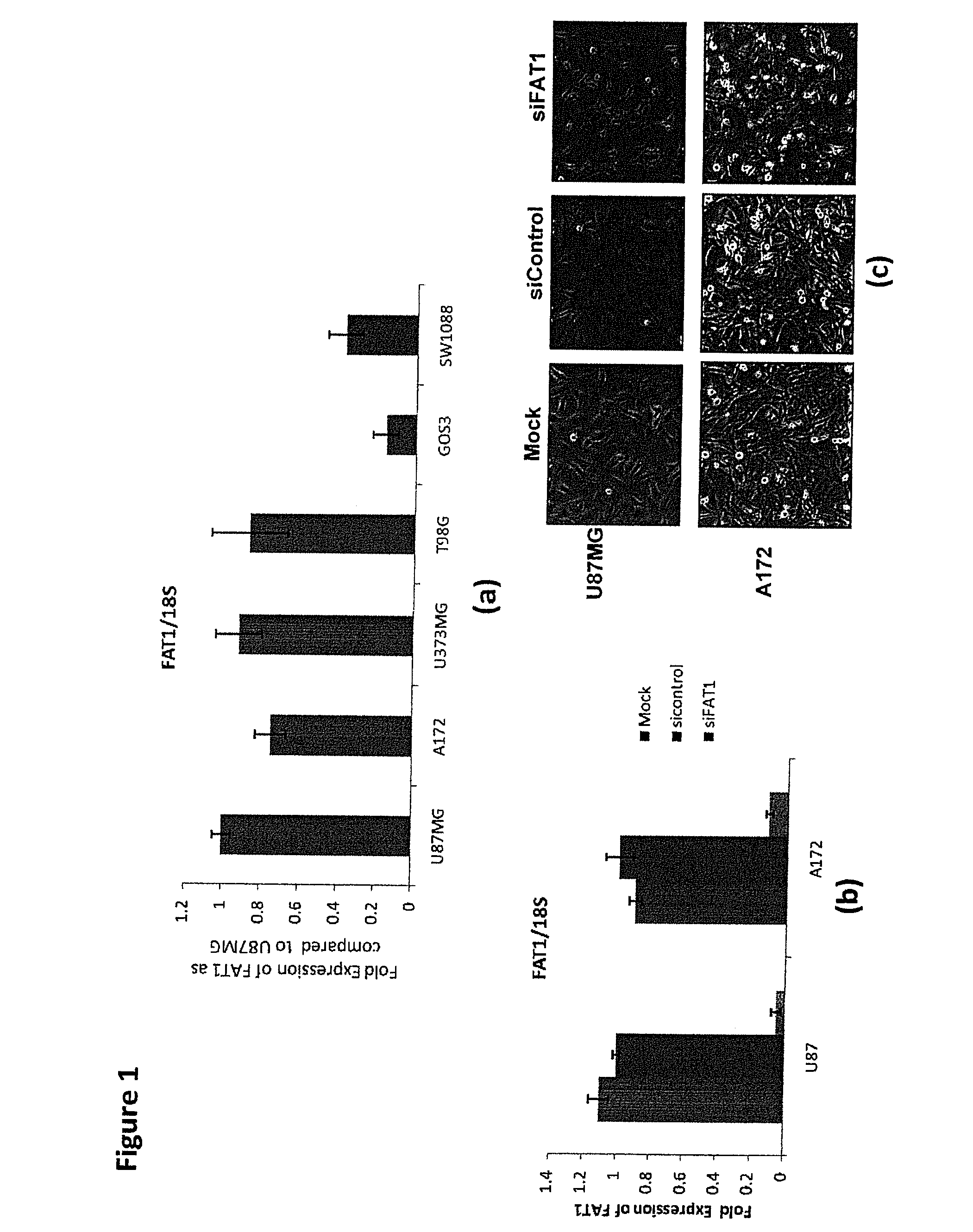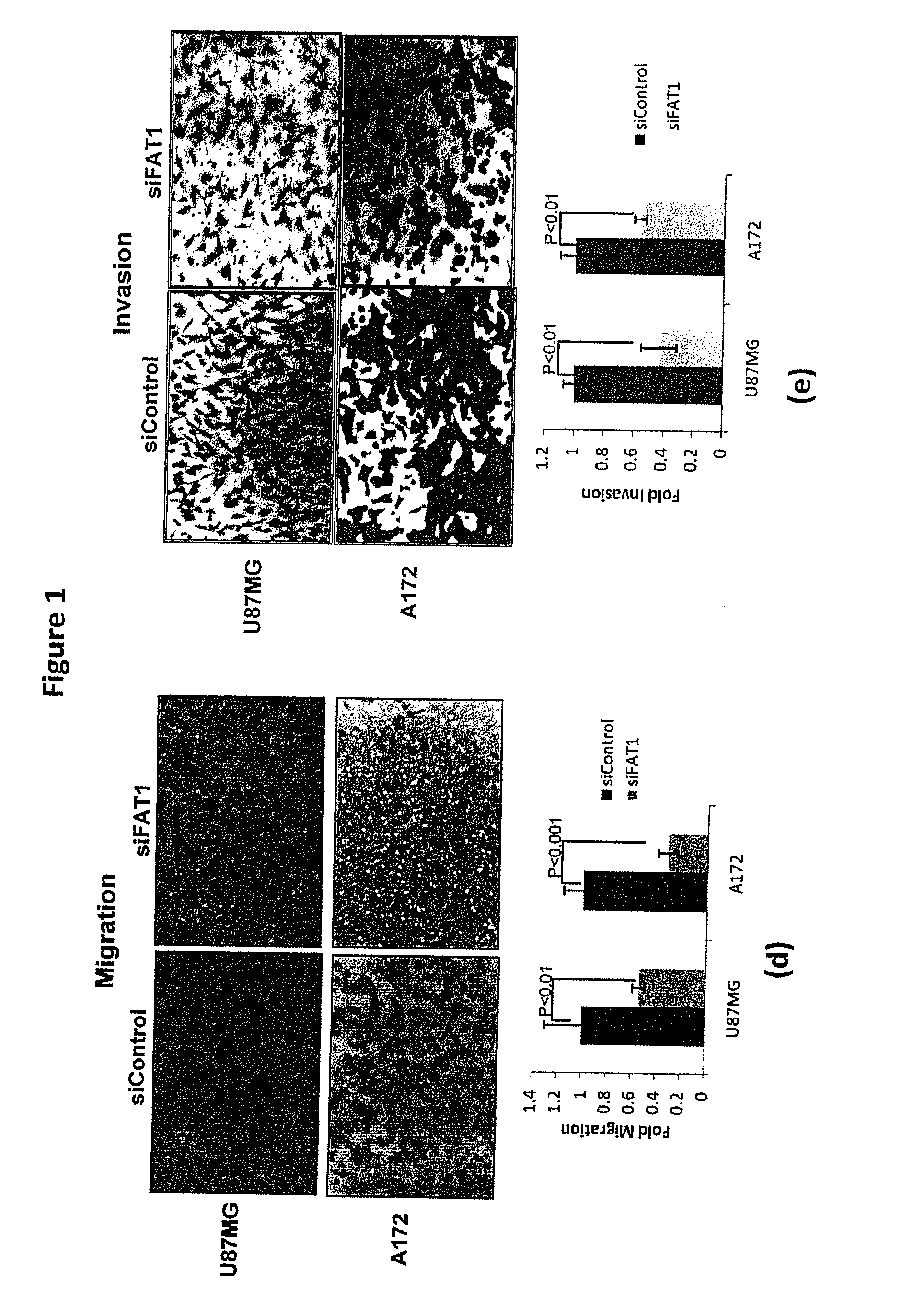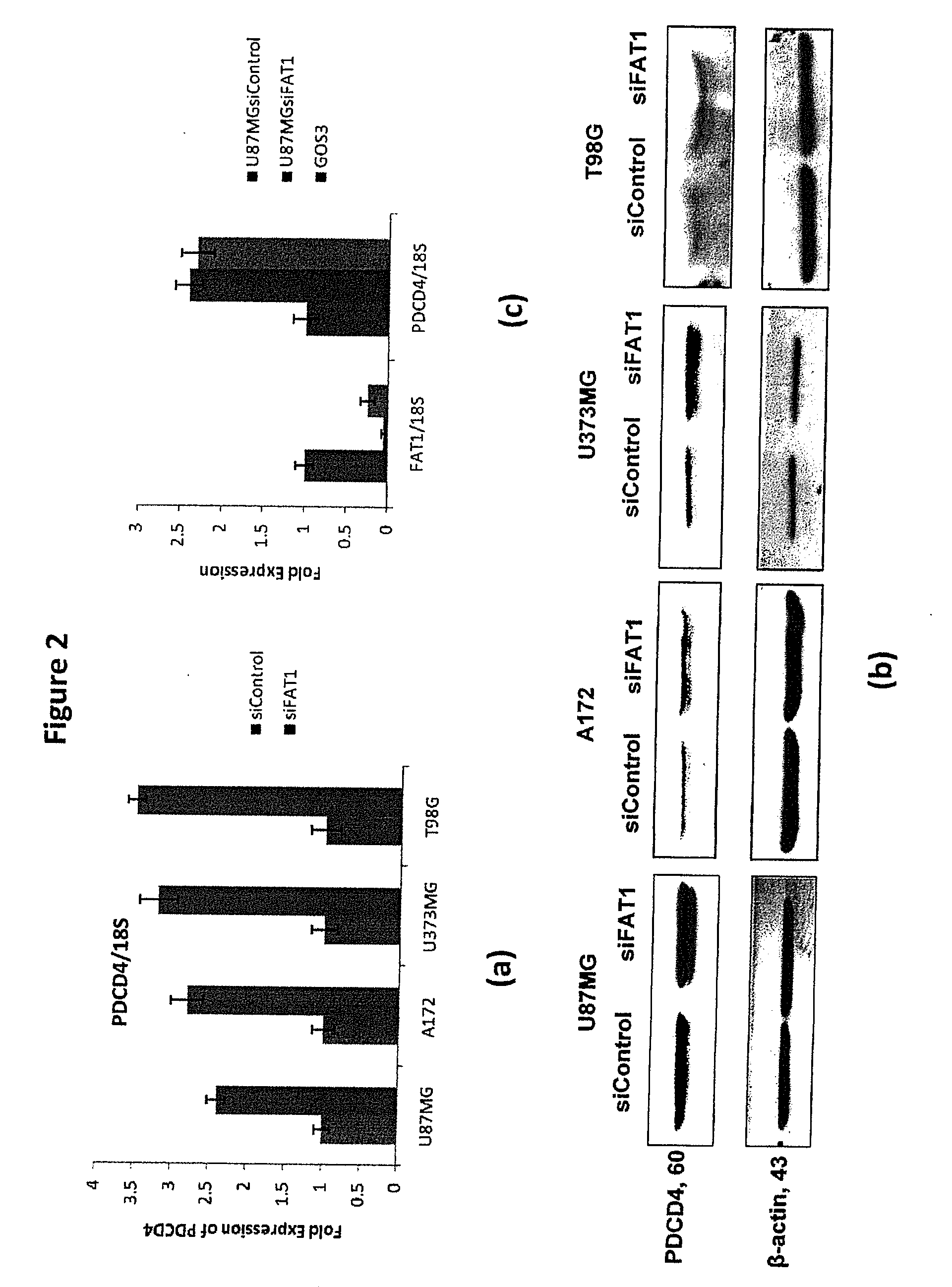Fat1 gene in cancer and inflammation
- Summary
- Abstract
- Description
- Claims
- Application Information
AI Technical Summary
Benefits of technology
Problems solved by technology
Method used
Image
Examples
example 1
Materials and Methods
[0130]Reagents and Antibodies:
[0131]Set of three siRNAs for FAT1 knockdowns, FAT Stealth RNAi siRNA-I (HSS103567) FAT Stealth RNAi siRNA-II (HSS103568) and FAT Stealth RNAi siRNA-III (HSS176716)) and universal medium GC control siRNA (cat. No 12935-112) were purchased from Invitrogen Life technologies, USA (Grand Island, N.Y.). For simultaneous knockdowns, on-target plus siRNA against FAT1 (J-010513-07-0020) and PDCD4 (J-004438-08-0020) and on-target plus non-targeting pool (D-001810-10-20) as control siRNA from Dharmacon (Chicago, Ill., USA). AP-1 luciferase reporter plasmid (AP-1 7×) was purchased from Stratagene, COX-2 promoter luciferase construct (a kind gift from Dr. Miguel A. Iniguez, Centro de Biología Molecular Universidad Autónoma de Madrid, Spain). AP-1 inhibitor SR 11302 was purchased from Tocris Biosciences (Bristol, UK); Normal brain RNA from Ambion, Life Technologies and Clontech (Mountain view, Calif., USA). Antibodies used for western blots, lik...
example 2
FAT1 Knockdown Reduces Migration and Invasion of Glioma Cells
[0151]FAT1 mRNA expression was checked in a panel of glioma cell lines and high FAT1 expression was observed in grade-IV glioma (GBM) cell lines (U87MG, A172, U373MG and T98G) as compared to grade-III glioma cell lines (GOS3 and SW1088) (FIG. 1a). The cell lines U87MG and A172 were studied further to analyze the effect of FAT1 knockdown. Knockdown efficiency of FAT1 in cells was checked by using a set of three FAT1 specific siRNA (details in materials and methods section) from Invitrogen and FAT1 siRNA I (HSS176716) was found to have maximum knockdown efficiency (FIG. S1, FIG. 7). FAT1 siRNA I was used for further experiments. 90% knockdown of FAT1 mRNA expression was observed in FAT1 siRNA treated (U87MGsiFAT1 and A172siFAT1) cells as compared to control siRNA (Invitrogen) treated (siControl) cells, 72 hrs post transfection (FIG. 1b). There were significant morphological alterations (cells were more spindly) in siFAT1 tre...
example 3
FAT1 Knockdown Enhances PDCD4 Expression
[0153]In initial screening by microarray for altered gene expression after FAT1 knockdown in U87MG cell line, PDCD4 was identified as one of the up-regulated genes. This was further confirmed by q-PCR and Western blot analysis in 4 GBM cell lines, U87MG, A172, U373MG and T98G. There was 2.4, 2.8, 3.2 and 3.5 fold increase in PDCD4 mRNA expression (FIG. 2a) as well as increased PDCD4 protein level (FIG. 2b) in siFAT1 treated U87MG, A172, U373MG, and T98G cells respectively as compared to their respective siControl treated cells. The grade III glioma cell line, GOS3, with low endogenous FAT1 expression (FIG. 1a) had high PDCD4 mRNA expression (FIG. 2c), corroborating the inverse relationship between FAT1 and PDCD4.
[0154]The prior art teaches that phospho-Akt and PDCD4 negatively regulate each others' expression. However, to the contrary, in the present invention, increased phospho-Akt levels (FIG. 9) were observed along with increased PDCD4 expr...
PUM
 Login to View More
Login to View More Abstract
Description
Claims
Application Information
 Login to View More
Login to View More - R&D
- Intellectual Property
- Life Sciences
- Materials
- Tech Scout
- Unparalleled Data Quality
- Higher Quality Content
- 60% Fewer Hallucinations
Browse by: Latest US Patents, China's latest patents, Technical Efficacy Thesaurus, Application Domain, Technology Topic, Popular Technical Reports.
© 2025 PatSnap. All rights reserved.Legal|Privacy policy|Modern Slavery Act Transparency Statement|Sitemap|About US| Contact US: help@patsnap.com



